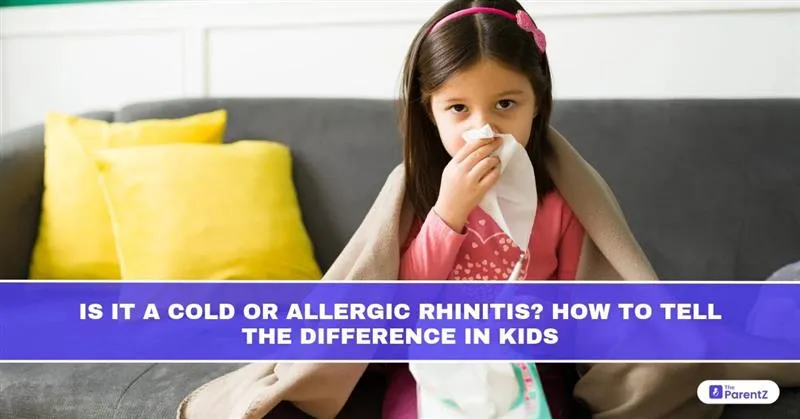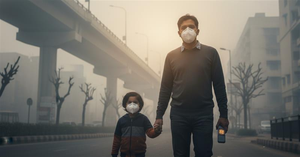A stuffy nose, sneezing, and a tired-looking child are common sights in pediatric clinics. But what if your child keeps getting “colds” without ever fully recovering? Parents often confuse allergic rhinitis with viral upper respiratory infections, especially in young children. Though symptoms can overlap, the underlying causes and treatments are very different.
Understanding the Basics
The Common Cold
The common cold is a viral infection caused by rhinoviruses and other respiratory pathogens. It is self-limiting and spreads through droplets when someone coughs or sneezes.
Allergic Rhinitis (Hay Fever)
Allergic rhinitis is a chronic immune response to allergens like pollen, dust mites, mold, or pet dander. It’s not caused by a virus and often persists or recurs seasonally or year-round.
Side-by-Side Symptom Comparison
| Symptom | Common Cold | Allergic Rhinitis |
| Cause | Virus | Allergens |
| Onset | Gradual (1–3 days after exposure) | Sudden (within minutes of allergen exposure) |
| Duration | 5–10 days | Weeks to months (recurrent or persistent) |
| Nasal Discharge | Thick, yellow or green | Clear, watery |
| Sneezing | Present, but less frequent | Frequent and repetitive |
| Itchy Eyes/Nose/Throat | Rare | Very common |
| Fever | Sometimes | Never |
| Cough | Mild to moderate, often worse at night | May be due to postnasal drip |
| Fatigue | Mild, short-lived | Can be persistent due to poor sleep |
| Dark Circles Under Eyes (Allergic Shiners) | No | Often present |
| Contagious | Yes | No |
| Time of Year | Any season | Spring, summer, or specific to allergen exposure |
Clinical Red Flags for Allergic Rhinitis
- Your child always seems “a little sick,” especially in spring or fall.
- Frequent eye rubbing or nose scratching (“allergic salute”).
- Clear nasal discharge that never seems to go away.
- Symptoms that improve indoors or worsen after going outside.
- Repeated “colds” that don’t respond to home remedies.
Diagnostic Clues for Parents and Clinicians
While both conditions share overlapping symptoms, allergic rhinitis tends to follow a pattern and often runs in families with other atopic conditions like eczema or asthma.
Key differentiators include:
- No fever in allergic rhinitis.
- Itching is rare in viral colds but prominent in allergies.
- Nasal eosinophilia, when tested, points toward allergic causes.
- History of recurrence, especially around the same season or exposure.
For persistent symptoms, a pediatrician may recommend:
- Skin prick testing for common allergens.
- Serum IgE levels to specific allergens.
- Nasal cytology (rarely used) to differentiate inflammation types.
Treatment Approaches: Why It Matters
Treating the wrong condition can lead to prolonged symptoms, overuse of antibiotics, or steroid overuse.
For the Common Cold:
- Supportive care (fluids, rest, humidifier).
- Paracetamol or ibuprofen for fever.
- Saline nasal drops or sprays.
- Avoid antibiotics unless secondary infection is suspected.
For Allergic Rhinitis:
- Allergen avoidance: Pollen, dust, pet dander.
- Daily saline nasal irrigation.
- Second-generation oral antihistamines (cetirizine, loratadine).
- Intranasal corticosteroids (safe and effective for children over 2).
- Allergen-specific immunotherapy for moderate to severe cases.
When to Seek Medical Advice
See a pediatrician if:
- Your child has more than 6–8 “colds” a year that don’t follow the usual course.
- Symptoms linger for more than 10 days.
- They complain of frequent headaches or facial pain (suggesting sinusitis).
- School performance or sleep is affected.
- Asthma symptoms develop or worsen.
Can a Child Have Both?
Yes. Children can have a cold superimposed on allergic rhinitis, making it harder to tell them apart. Allergic kids also have more reactive nasal passages, making them more susceptible to viral triggers. In such cases, a layered approach to treatment is required.
Conclusion
Recognising the difference between allergic rhinitis and a cold is essential for targeted relief and long-term care. If your child experiences frequent cold-like symptoms without the usual viral course or if symptoms always seem to occur during the same season, it’s worth discussing allergy testing with your pediatrician.
With the right diagnosis and care, your child can breathe easier both literally and figuratively.








Be the first one to comment on this story.